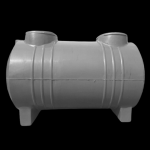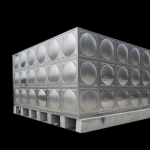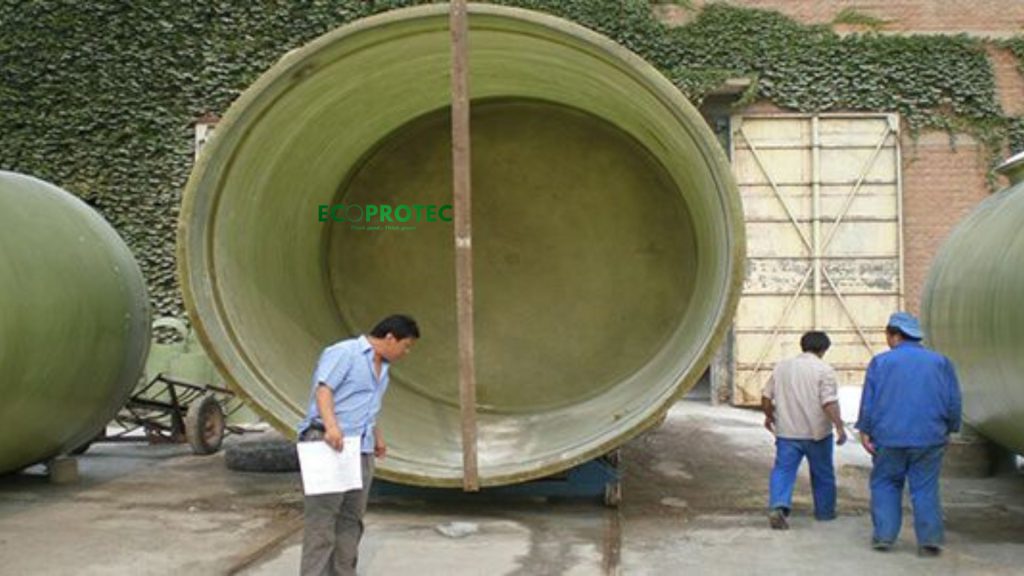Proper and Safe Maintenance Guide for FRP Composite Chemical Storage Tanks
Chemical storage tanks play a vital role in industries such as chemical manufacturing, wastewater treatment, fertilizer production, food processing, and pharmaceuticals. Among them, FRP (Fiberglass Reinforced Plastic) composite tanks stand out due to their corrosion resistance and long service life. However, to ensure absolute safety, maintain long-term performance, and optimize investment costs, proper maintenance is essential. This article provides a detailed guide on how to maintain FRP composite chemical tanks — especially acid tanks and sulfuric acid (H₂SO₄) tanks — helping businesses proactively control risks during operation.
1. Why Is Periodic Maintenance of Chemical Storage Tanks Necessary?

1.1 To Protect Assets and Ensure Human Safety
Chemicals stored in tanks — such as sulfuric acid (H₂SO₄), hydrochloric acid (HCl), and sodium hydroxide (NaOH) — are highly corrosive. Without regular inspection and maintenance, minor damages can go unnoticed and lead to:
-
Chemical leakage and potential explosions
-
Corrosion of tank structure, reducing lifespan
-
Health hazards for operating staff and environmental contamination
1.2 To Maintain Performance and Durability of FRP Composite Tanks
A properly maintained FRP composite tank can last up to 15–20 years. Neglecting maintenance can result in:
-
Brittleness and cracking of the composite surface
-
Delamination of reinforcing layers, causing sudden failure
-
Decreased chemical resistance over time
2. Overview of FRP Composite Chemical Tank Structure Understanding the tank’s structure helps identify key areas for inspection and develop an effective maintenance plan:
Understanding the tank’s structure helps identify key areas for inspection and develop an effective maintenance plan:
| Component | Function |
| Inner liner | Directly contacts chemicals; corrosion-resistant |
| FRP reinforcement layer | Provides strength and pressure resistance |
| Outer protective layer | Shields against UV rays and weather elements |
| Accessories | Includes flanges, valves, sensors, vent pipes |
3. Standard Maintenance Process for FRP Composite Chemical Tanks
3.1 Schedule Regular Maintenance

Depending on the type of chemical and usage frequency, maintenance should follow the schedule below:
-
Concentrated chemicals (e.g., H₂SO₄, HNO₃, NaOH): Inspect every 3–6 months
-
Diluted or neutral chemicals: Inspect every 6–12 months
-
After switching chemicals: Inspect immediately
3.2 Step 1: Pre-Maintenance Preparation
-
Shut down operation: Stop all inflow/outflow of chemicals
-
Tank flushing: Clean the tank using neutral water or safe cleaning agents
-
Depressurize and vent gases: Open vents, check for toxic gas levels if necessary
-
Protective equipment: Ensure all staff wear proper chemical-resistant PPE
3.3 Step 2: External Tank Inspection
-
Check for cracks, leaks, and wear on the tank surface
-
Look for bubbling or peeling on the outer coating
-
Inspect valves, flanges, and sensors for normal operation
-
Examine the foundation for settlement or tilting
3.4 Step 3: Internal Inspection of the Chemical Tank
-
Check the liner for discoloration, blistering, or peeling
-
Look for crazing (fine cracks) or exposed fiberglass
-
Measure liner thickness using ultrasonic or mechanical gauges
3.5 Step 4: Inspection and Maintenance of Tank Accessories
| Component | Inspection Method |
| Drain/safety valves | Open manually; check for sticking or leakage |
| Vent pipes | Clean and ensure no blockage |
| Level sensors | Test with clean water to verify proper function |
| Flanges | Inspect gaskets; tighten bolts as needed |
3.6 Step 5: Cleaning and Restoration
-
Use neutral solutions to clean the tank
-
If the liner is damaged, restore the FRP composite liner
-
Repaint the outer UV protection layer if it has faded
4. Common Issues Due to Poor Maintenance of Chemical Storage Tanks
4.1 Chemical Leaks
-
Caused by cracks in the liner or flange joints
-
Can lead to foundation corrosion and safety hazards
4.2 Composite Material Aging
-
Caused by UV exposure or lack of outer protective coating
-
Leads to brittleness, cracking, and structural failure
4.3 Accessory Failures
-
Valves may jam due to chemical residue
-
Blocked vent pipes can cause pressure buildup
4.4 Errors When Switching Chemicals
-
Some tanks designed for H₂SO₄ may not handle HCl or alkaline substances
-
Changing chemicals without verifying material compatibility can damage the tank
5. Maintenance Notes for Specific Chemical Types

5.1 Acid Storage Tanks
-
Regularly inspect the internal liner layer
-
Test the pH of the rinse water to ensure no acid residue remains
5.2 Sulfuric Acid (H₂SO₄) Tanks
-
Highly corrosive if the tank is not made from the correct material
-
Use specialized Vinyl Ester liners and repair with compatible resins
5.3 Alkaline Storage Tanks (NaOH, KOH)
-
Inspect for sediment buildup at the bottom of the tank
-
Monitor material swelling or deformation over time
6. Chemical Storage Tank Maintenance Services at ATnewtech

We offer comprehensive maintenance packages for FRP composite chemical tanks, including:
-
On-site inspection and survey
-
Liner thickness and integrity measurement
-
Liner replacement and composite repair
-
Supply of genuine spare parts
-
Cleaning of the tank and auxiliary systems
Advantages of Choosing ATnewtech Services
-
Over 10 years of experience in FRP tank maintenance
-
Use of specialized measurement tools
-
Repairs follow strict technical standards
-
Guaranteed safety, timeliness, and cost efficiency
7. Frequently Asked Questions
Q1: How often should composite chemical tanks be maintained?
A: At least every 6 months for general chemicals, and every 3 months for concentrated acids.
Q2: Can we perform maintenance ourselves?
A: Due to the involvement of hazardous chemicals and specialized equipment, it’s recommended to hire professional service providers for safety and compliance.
Q3: What are the warning signs that urgent maintenance is needed?
A: Unusual chemical odors, discoloration of the tank shell, minor leaks, sensor malfunctions, or stuck valves.
8. Contact for Consultation – Maintenance – Installation of Composite Chemical Tanks
Are you operating a chemical system with strict safety requirements? Do you need reliable, cost-effective tank performance? Let ATnewtech support you!
📞 Technical Hotline: 0834 473 166 🌐 Website: https://atnewtech.vn
Investing in FRP composite chemical storage tanks is a smart move — but to maximize long-term performance, proper maintenance is essential. We hope this guide has helped you better understand:
-
Why regular maintenance is crucial
-
How to inspect and restore composite chemical tanks
-
Special precautions when storing acids, bases, and H₂SO₄
-
The full-service maintenance support offered by ATnewtech
Don’t let minor damage turn into major risks — start maintaining your chemical tanks today to protect your assets and ensure workplace safety.

 Composite Tank
Composite Tank Water tank cover.
Water tank cover. Kitchen equipment
Kitchen equipment Industrial water tank
Industrial water tank


